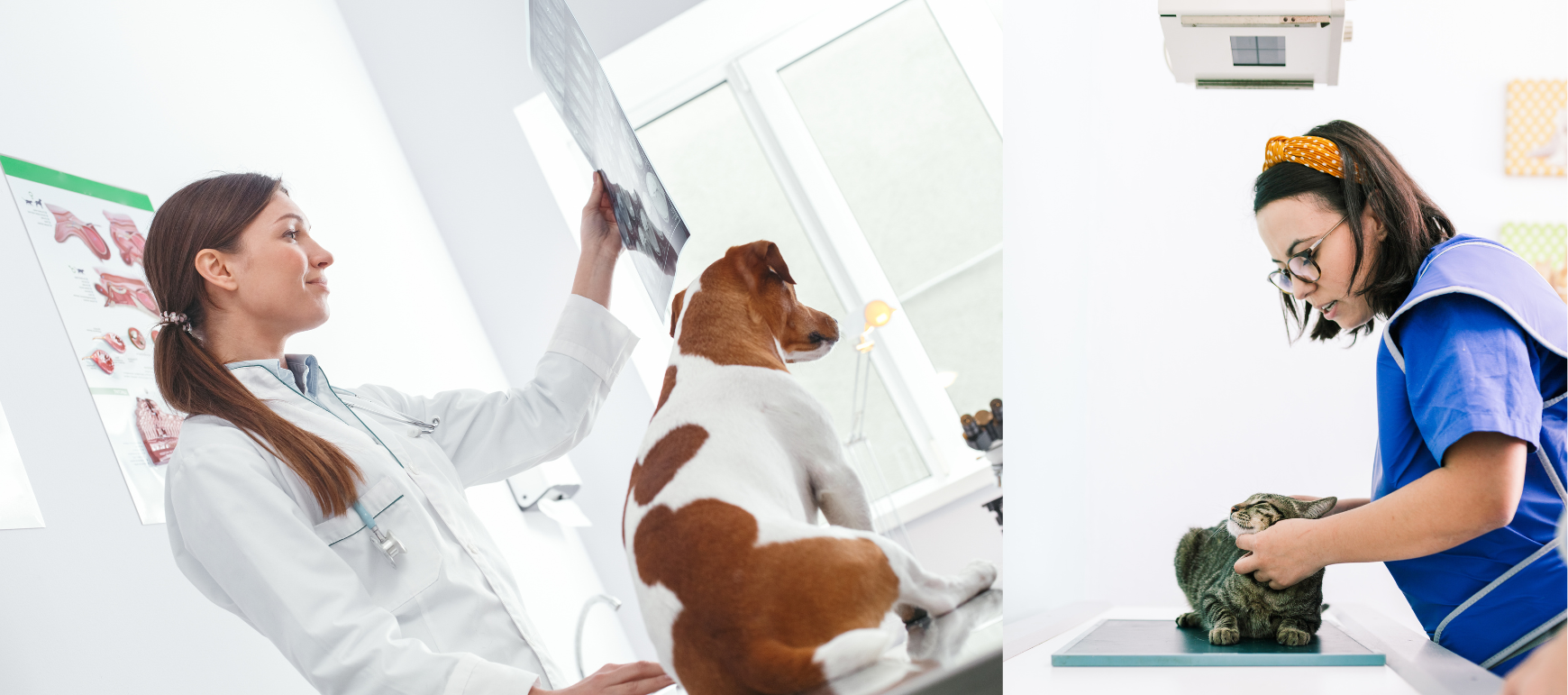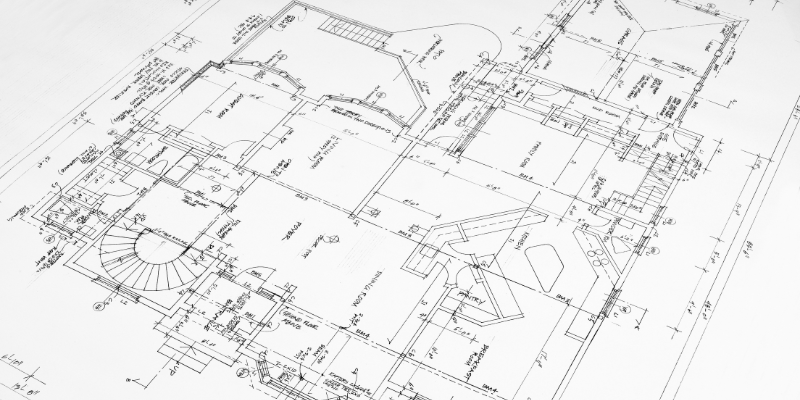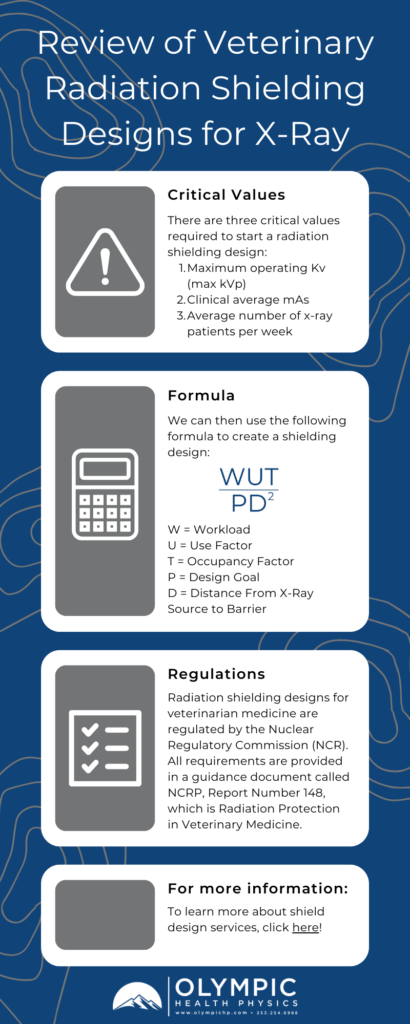Veterinary Radiation Shielding Design for X-Ray

In this post, we’re going to be talking about veterinary radiation shielding designs for X-Ray.
Watch the video below on our YouTube channel as Eric walks you through what a veterinary radiation shielding design is for, what information is required to prepare a design, and the calculations used to create it.
What Are We Shielding in Veterinary Medicine?
When creating a radiation shielding design for veterinary medicine, we’re shielding the x-ray units that are installed in veterinarian hospitals. Oftentimes, we will also shield dental spaces, although we aren’t talking about dental today.
Why Do We Need Shielding At All?
The reason that we need shielding is so that we can demonstrate that we are not exposing members of the public or employees to radiation unnecessarily. We want to create a shield around the x-ray unit and the room that the x-ray unit is in to ensure that the radiation produced stays in that space. This includes either primary radiation or scatter radiation.
Factors Required For Shielding a Veterinarian Radiographic Space
What are the factors that we need to consider when we’re shielding a veterinarian radiographic space?
There are actually a number of factors. All of the information that we need comes from a guidance document called NCRP, Report Number 148, which is Radiation Protection in Veterinary Medicine. The appendix walks us through exactly how to do a shielding design. The pieces of information that we need are:
- The maximum operating Kv (max kVp). This is the maximum operating Kv that you’re going to use clinically.
- The average mAs that you’re going to use clinically
- How many patients per week on average are going to receive x-ray imaging
What is Workload?
Using the three values from above, we can determine the workload or how much radiation is going to be generated within the radiology space for a given week. We then convert that to milliamp minutes per week to get the workload.
What is the Use Factor?
We also need to know the use factor. The use factor is how often the x-ray tube is pointed or radiation is incident on a particular barrier. Oftentimes if you’re in a single story building, there’s no occupancy above or below the x-ray space. Then we only consider scatter radiation. If you have a multiple story building and you are directing the useful beam either into the floor or into a wall, then we need to consider the use or how often it’s going to be pointed at a particular wall to understand the primary radiation. In most veterinarian applications, the x-ray tube is just pointed at the floor. Most veterinarian hospitals are in a single story building, or if it isn’t in a single story building, the x-ray will be on the first floor with nothing below. In those cases we can just assume scatter radiation, which is a little bit easier to deal with from a shielding perspective.
What is the Occupancy Factor?
In addition to the workload and the use factor, we also need to know the occupancy factor. The occupancy factor is a description of what is in the surrounding areas that are around the x-ray room. For example, is there a hallway on the other side or is it a office, a bathroom or is it an outside exterior to the building? We need to know what is around the x-ray room so that we can apply the correct occupancy factor.
A Floor Map or Blueprint

The best way for us to do this is to get a floor map, and that floor map should be to scale so that we know what the distances are from the x-ray unit itself to each of the different barriers. With that floor map, we can measure those distances and we can also determine what is on the other side of each wall.
From there, we need to know a description of what is in each barrier that is already in the room. Are we talking about just standard gypsum wallboard? Are we talking about exterior walls with concrete masonry unit blocks? Concrete blocks? What is in the walls already? Has the room previously been shielded or is there already maybe lead in the walls?
We also want to know this information before we get started on the shielding design. Oftentimes we can get that information if it’s an older building using an as-built blueprint from the architect or potentially we could use a previous shielding design that was done in the past.
The Shielding Design Calculation
From all of the information gathered above, we calculate the shielding design using the following formula, where each value equals:
W = Workload
U = Use Factor
T = Occupancy Factor
We multiply those numbers together and divide by PD squared.
P = Design Goal. The design goal is the amount of radiation dose that we’re allowed to go through the wall.
D = Distance From the X-Ray Source to the Barrier

Putting it All Together
Once we complete the calculation using the formula, we can use this information to go back to a lookup table in our guidance documents and NCRP Report Number 148. We look up that value against the max operating voltage, the max kVp, and determine the amount of shielding that needs to be put into the barrier for a veterinarian x-ray.
Oftentimes we find that we can shield the room with simple drywall or perhaps additional layers of or thicker drywall or gypsum wallboard. There are some applications where we need to put lead into the walls because it would be too much drywall stacked on top of each other.
Height of Shielding
When we prescribe any kind of shielding, it needs to extend from the floor to a height of seven feet, and any barrier penetrations for things like outlets or duct work would need to be backed or somehow stopped with the equivalent material that’s prescribed in the rest of the wall.
Additionally, for veterinarian x-ray installations, we oftentimes don’t see control rooms. This is standard practice in veterinarian medicine. The last thing to know about veterinarian shielding designs is that even though we may not need to put lead in the walls, oftentimes the actual shielding design is going to be required by a regulatory agency, normally a state.
If you’re installing a new x-ray unit in a veterinarian suite, it’s important to understand the actual requirements for producing a radiation shielding design for veterinarian spaces.
Conclusion
If you have questions about radiation shielding design for veterinarian applications, feel free to reach out.
We’ll be happy to review your particular situation and give you ideas on the best way that you can shield your x-ray room and make sure that you’re keeping your department, your clinic, or your hospital safe for your staff and your visitors.
If you require assistance with a veterinary radiation shielding design, including CT and dental, please reach out or click here to learn more about our shielding design services. You can also always reach out to us if you have questions or want more information on why you should partner with us.
